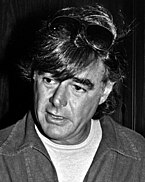
The Phantom Zone is a prison-like parallel dimension appearing in American comic books published by DC Comics. It is mainly associated with stories featuring Superman. It first appeared in Adventure Comics #283, and was created by Robert Bernstein and George Papp. It was frequently used in the Superman comics before the continuity was rebooted in the 1980s, after Crisis on Infinite Earths, and has appeared occasionally since.

Superman is a 1978 superhero film based on the DC Comics superhero Superman, played by Christopher Reeve. It is the first of four installments in the Superman film series starring Reeve as Superman. The film was directed by Richard Donner based on a screenplay by Mario Puzo, David Newman, Leslie Newman, and Robert Benton. In addition to Reeve, the film features an ensemble cast including Marlon Brando, Gene Hackman, Jeff East, Margot Kidder, Glenn Ford, Phyllis Thaxter, Jackie Cooper, Trevor Howard, Marc McClure, Terence Stamp, Valerie Perrine, Ned Beatty, Jack O'Halloran, Maria Schell, and Sarah Douglas. It depicts the origin of Superman, including his infancy as Kal-El of Krypton, son of Jor-El (Brando), and his youthful years in the rural town of Smallville. Disguised as reporter Clark Kent, he adopts a mild-mannered disposition in Metropolis and develops a romance with Lois Lane (Kidder) while battling the villainous Lex Luthor (Hackman).
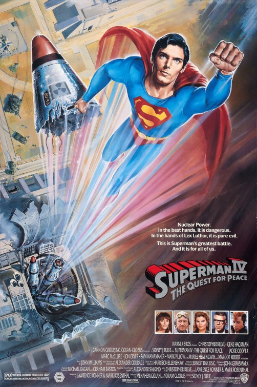
Superman IV: The Quest for Peace is a 1987 superhero film directed by Sidney J. Furie and written by Lawrence Konner and Mark Rosenthal from a story by Christopher Reeve, Konner, and Rosenthal based on the DC Comics character Superman. The film stars Reeve, Gene Hackman, Jackie Cooper, Marc McClure, Jon Cryer, Sam Wanamaker, Jim Broadbent, Mariel Hemingway, and Margot Kidder.
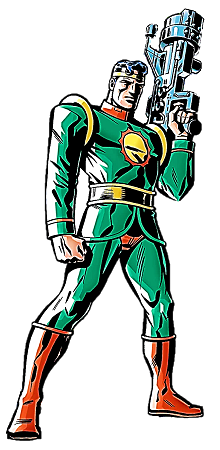
Jor-El is a character appearing in American comic books published by DC Comics. Created by writer Jerry Siegel and artist Joe Shuster, Jor-El first appeared in the Superman newspaper comic strip in 1939.

The Fortress of Solitude is a fictional fortress appearing in American comic books published by DC Comics, commonly in association with Superman. It is the place where Superman first learned about his true identity, heritage, and purpose on Earth. The fortress functions as a place of solace/occasional headquarters for Superman and is typically depicted as being in frozen tundra, away from civilization. Its predecessor, Superman's "Secret Citadel", first appeared in Superman #17, where it was said to be built into a mountain on the outskirts of Metropolis. By issue #58 it is referred to as the Fortress of Solitude, seems at a glance to be a freestanding castle, and is said to be located in a "polar waste". When the Fortress reappears in 1958 and for the first time takes center stage in a story, it is again an underground complex in a mountainous cliffside.

General Zod is a supervillain appearing in American comic books published by DC Comics, commonly as an adversary of the superhero Superman. The character, who first appeared in Adventure Comics #283, was created by Robert Bernstein and initially designed by George Papp. As a Kryptonian, he exhibits the same powers and abilities as Superman and is consequently viewed as one of his greatest enemies alongside Lex Luthor, Darkseid and Brainiac. He is also well known for his famous catchphrase, "Kneel before Zod!".

Superman III is a 1983 superhero film directed by Richard Lester from a screenplay by David Newman and Leslie Newman based on the DC Comics character Superman. It is the third installment in the Superman film series and a sequel to Superman II (1980). The film features a cast of Christopher Reeve, Richard Pryor, Jackie Cooper, Marc McClure, Annette O'Toole, Annie Ross, Pamela Stephenson, Robert Vaughn, and Margot Kidder.
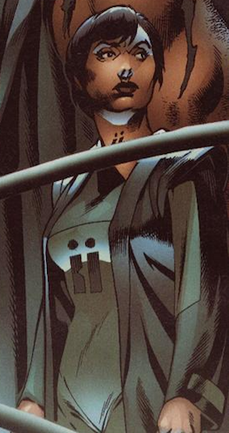
Ursa is a fictional supervillain appearing in American comic books published by DC Comics. She first appeared in the 1978 film Superman: The Movie portrayed by actress Sarah Douglas. The character made her comic book debut in Action Comics #845. An adversary of the superhero Superman and accomplice of General Zod, she is typically depicted as having been imprisoned in the Phantom Zone along with Zod and Non.
The Superman dynasty, an extension of the House of El, is a lineage of DC Comics superheroes. The term is used for the descendants of Kal-El, the original Superman, who continue to uphold his legacy of heroism well into the 853rd century, as depicted in the DC One Million crossover. Repeated references to members of the Superman dynasty, as Superman's "descendants" and at least one reference to them as the "blood of his blood" would seem to indicate that they are, in fact, the biological descendants of Superman in some fashion.

Superman II: The Richard Donner Cut is a 2006 re-edited director's cut of the 1980 superhero film Superman II. It is a sequel to Richard Donner's 1978 film Superman, based on the DC Comics superhero of the same name, and stars Gene Hackman, Christopher Reeve, and Marlon Brando. This alternate cut was edited by Michael Thau and was overseen and completed by Donner himself. It features a significant amount of discarded footage, alternate takes, and story elements not featured in the theatrical version.

Non is a fictional supervillain appearing in American comic books published by DC Comics. He first appeared in the 1978 film Superman: The Movie portrayed by actor and former boxer Jack O'Halloran. The character made his comic book debut in Action Comics #845. An accomplice of General Zod and an adversary of the superhero Superman, he is typically depicted as having been imprisoned in the Phantom Zone, along with Zod and Ursa, among whom he is portrayed as the strong and silent muscle.

Christopher Kent (Lor-Zod) is a superhero appearing in American comic books published by DC Comics. The character first appeared in Action Comics #844 and was created by Richard Donner, Geoff Johns, and Adam Kubert.

"Last Son" is a five-issue comic book story arc featuring Superman in the monthly Action Comics. It was written by Geoff Johns and Richard Donner, the director of the well-known 1978 film Superman: The Movie and a portion of Superman II, with pencils by Adam Kubert. This story introduces the original character, Christopher Kent and adapts the classic Superman film villains, General Zod, Ursa and Non into the regular DC Universe continuity.

Superman: Last Stand on Krypton is a comic book Elseworlds story, published by DC Comics in 2003. Written by Steve Gerber with art by Doug Wheatley, the book is the sequel to the comic book Superman: Last Son of Earth, also by Gerber and Wheatley. Last Stand on Krypton picks up 10 years after Last Son of Earth. Earth has thrived thanks to Superman and Kryptonian technology, but Lex Luthor now threatens Krypton.

Superman (Kal-El) or Clark Kent is a fictional character portrayed by Christopher Reeve in the Warner Bros. Superman film series produced by Ilya and Alexander Salkind and Cannon Films, and is an adaption of the original DC Comics character, Superman. Many actors were interviewed for the part before Christopher Reeve was chosen to fill the role. Superman is portrayed as a superhero who stands for "truth, justice and the American way".
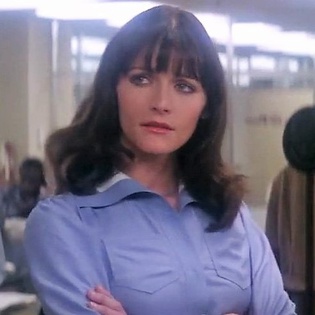
Lois Lane is a fictional character portrayed by Canadian-born actress Margot Kidder in the Warner Bros. Superman film series produced by Ilya and Alexander Salkind, and is an adaption of the original comic book character, Lois Lane. Kidder played Lois Lane opposite Christopher Reeve in Superman (1978), Superman II (1980), Superman III (1983), and Superman IV: The Quest for Peace (1987). The role proved to be Kidder's most notable, catapulting her to international fame, and this iteration of Lois Lane has been considered one of the most iconic love interests in superhero films.

Dru-Zod is a fictional character in the DC Extended Universe based on the DC Comics character of the same name. He is portrayed by Michael Shannon. Zod first appeared in the 2013 film Man of Steel, as a rogue general trying to lead a coup against the ruling elite of the planet Krypton, forcing the planet's chief scientist, Jor-El, to send his son Kal-El to Earth. Zod is punished for his war crimes, with him and his subordinates intended to be sent to the Phantom Zone, but following Krypton's destruction, he and his followers escape and follow Kal-El to Earth, forcing him to become Superman and protect the planet and its inhabitants. Shannon's portrayal of Zod has received positive reviews, and the character is considered one of the best villains in the DCEU. Shannon reprised his role in The Flash (2023).

General Zod is a fictional character in the Superman film series based on the DC Comics character of the same name. He is portrayed by Terence Stamp. Zod is notably the only other villain to appear in the film series originating from the comics besides Lex Luthor.

Lex Luthor is a supervillain portrayed by American-actor Gene Hackman in the Warner Bros. Superman film series produced by Ilya and Alexander Salkind, and is an adaption of the original DC Comics character, Lex Luthor. Luthor's girlfriend, film-original character Eve Teschmacher, was later adapted to comic books and other media.

